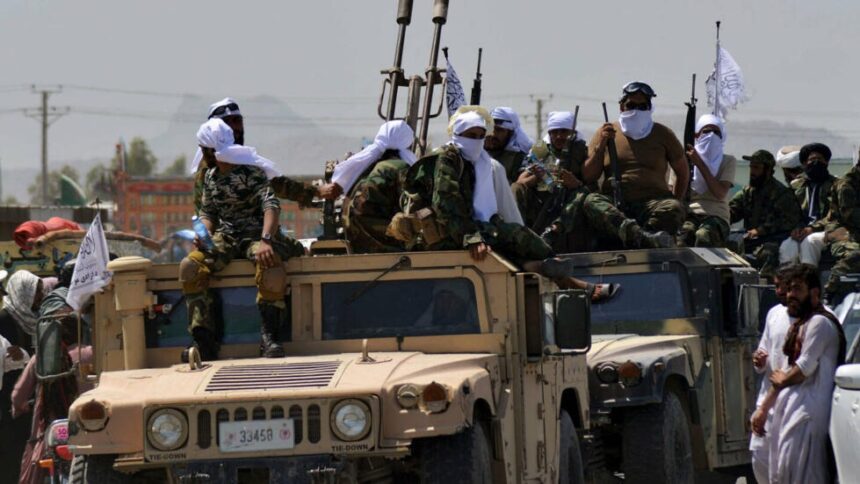RASC News Agency: Despite the Taliban’s persistent claims over the past three years that they have improved living conditions in Afghanistan, CBS News reports that the group, in reality, rules the country with an “iron fist” and an arsenal of U.S. military equipment left behind after the chaotic withdrawal of American forces. According to a 2022 report by the U.S. Department of Defense (Pentagon), the Taliban now possess 78 military helicopters and aircraft, 40,000 armored vehicles and tanks, and over 300,000 small and heavy firearms all originally supplied by the United States.
Responding to CBS News, Abdul Qahar Balkhi, spokesperson for the Taliban’s Ministry of Foreign Affairs, stated: “These assets belong to the Afghanistan government and will remain under its control (under Taliban rule).” Meanwhile, former U.S. President Donald Trump, in the lead-up to his re-election campaign, sharply criticized the Biden administration, accusing it of abandoning billions of dollars’ worth of military hardware to the Taliban following the 2021 withdrawal a withdrawal that had initially been negotiated under Trump’s own administration. Trump has now vowed to reclaim these military assets from the Taliban. The estimated value of the abandoned U.S. weaponry is $7 billion.
CBS News also highlights the dramatic transformation of Kabul, which has undergone visible changes after two decades of war. The Taliban, according to the report, claim they are closing the chapter on war and opening a new era one that could be defined by Afghanistan’s vast mineral resources. The country is believed to hold over $1 trillion worth of untapped mineral reserves, including lithium, a crucial element for smartphone batteries and electric vehicles. Donald Trump has long expressed interest in Afghanistan’s resource wealth, and a 2010 Pentagon report even described the country as the “Saudi Arabia of lithium.”
However, CBS News notes that the race for Afghanistan’s mineral riches is already well underway. Both China and Russia have made substantial investments in the country’s mining sector, positioning themselves as key players in what is shaping up to be a high-stakes geopolitical contest over Afghanistan’s strategic resources.






